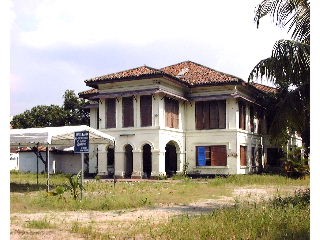The etymology of the term gelam suggests two possible derivations: either from the name of a tree (Melaleuca leucadendron) , or the ethnonym of a group of people: orang laut suku gelam (Wee 2016: 262). Captain Peter James Begbie purportedly wrote that Kampung Gelam was named “on account of the Glam trees in its neighbourhood”. “The Glam is a species of the Kayu Putih [kayu putih = white wood in Malay] whose leaves yield the well-known medicinal oil commonly contracted into Cajeput” (Buckley 1965: 30). An article in the Straits Times Overland Journal for 1881 referred to “Campong Glam” where “a number of caulkers”, called “Orang Glam”, lived “where they collected quantities of bark from a tree called by the natives ‘Glam,’ which they used in caulking vessels and prahus”.
Munshi Abdullah, the famous Malay scholar and teacher of Raffles, also suggested that the use of gelam could be linked to the gelam or cajeput tree. He referred to the presence at Kampung Gelam in the 1820s of “two or three huts of the Sea Gypsies, the Orang Laut of the Gelam tribe, who spent their time making awnings and sails from the bark of the gelam tree” (Abdul Kadir and Hill 1985: 144).
The tree in question, gelam, was commonly found in the area. The tree has multiple uses. Its bark was used in mat making and for caulking the seams of boats, its timber for boat-building and firewood, its fruits purportedly functioned as a type of pepper (Mercha Bolong), and its leaves were the key ingredient for cajeput oil (Perkins 1984: 12). The wood is resistant to salt water and was often used for house posts, piers and other structures built in brackish coastal areas. Numerous medicinal properties were ascribed to the oil of the tree (Burkill 1966 II, 1455-1457).
Sopher’s reference to the Orang Laut who dwelled on the Singapore River described them as being “no different from the sea nomads of the islands to the south”; they “belonged to the suku Gelam, one of the sukus [tribes] of the Batam Archipelago, possibly from the southern part of Bulan island” (1977: 105). Logan referred to “Orang Gilam” as one of the Orang Laut groups (Logan 1847: 336). “Some 10,000 Orang Laut who comprised the Suku Gelam, Seletar and Kallang aligned themselves with the Temenggong Abdul Rahman of Singapore” (Chou 2009: 52–53)
